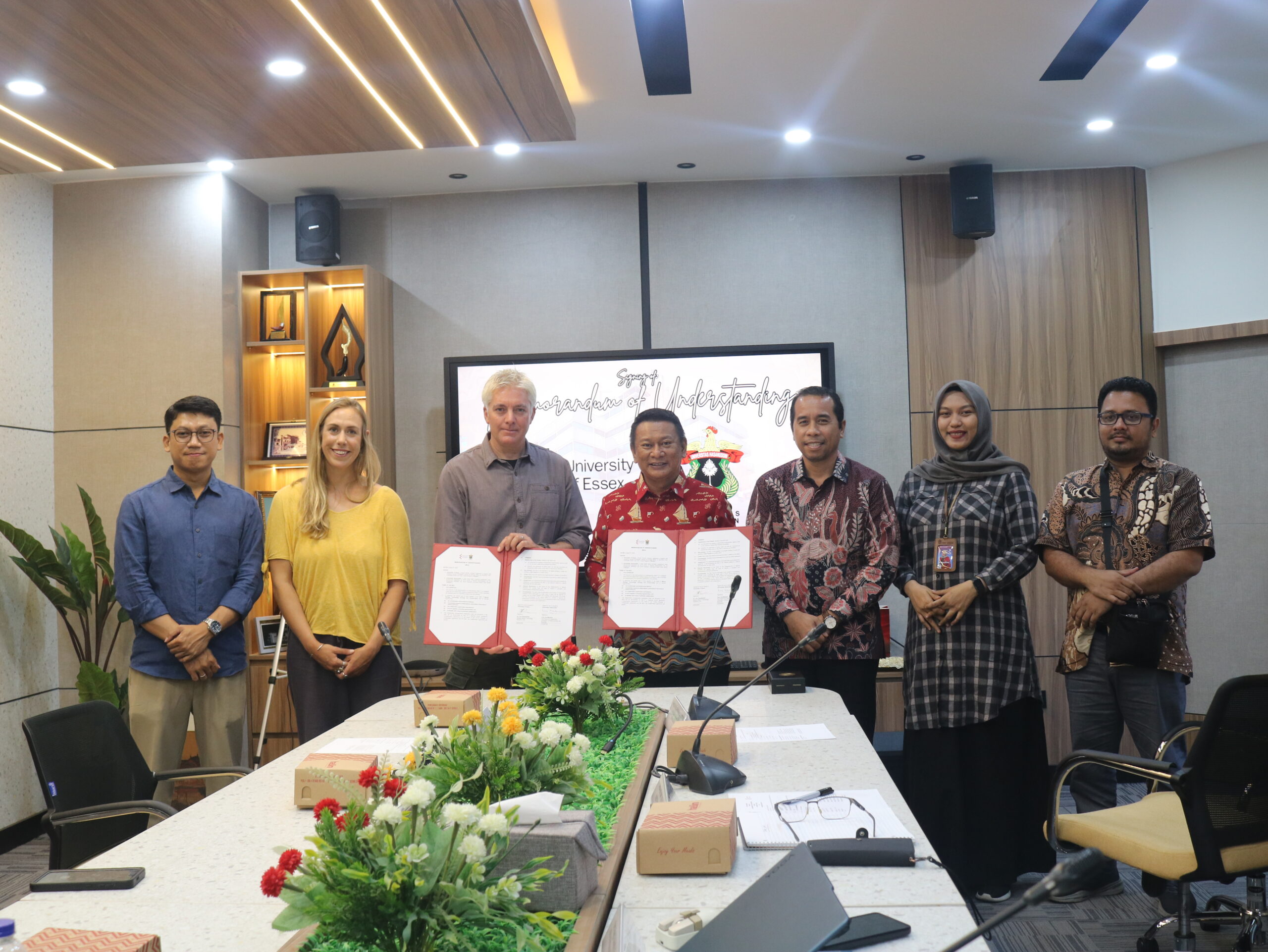The University of Essex (UK) and Universitas Hasanuddin (UNHAS), Indonesia, have renewed their longstanding partnership through the signing of a new Memorandum of Understanding (MoU), celebrating more than two decades of impactful academic collaboration. This agreement reaffirms a shared commitment to research excellence, capacity building and interdisciplinary innovation, particularly in the fields of marine science, computer science, engineering and life sciences.
The MoU was signed by Dr Jon Chamberlain, Director of the Marine Technology Research Unit and Associate Professor at the University of Essex, and Professor Dr Adi Maulana ST MPhil, Vice Rector for Partnership, Innovation, Entrepreneurship, and Business at UNHAS.

Over the last 20 years, the partnership — led by Prof Dr Ir Jamaluddin Jompa, M.Sc. of UNHAS and Professor David Smith of Essex — has yielded significant research contributions to marine and coastal science, particularly in Southeast Asia. From biodiversity conservation and reef monitoring to sustainable marine resource use, their joint efforts have influenced both scientific understanding and regional policy.
Looking forward, the renewed partnership will focus initially on enhancing marine research by integrating cutting-edge technologies and interdisciplinary approaches. Both universities also plan to explore wider collaborative projects in economics, business studies, politics, sociology and law — fields increasingly relevant in addressing the complex social and policy dimensions of environmental sustainability.
“Renewing this partnership is not just a formal step; it’s a commitment to knowledge transfer and scientific excellence,” said Dr Jon Chamberlain. “We’re excited to continue building on the strong foundation laid by Professors Jompa and Smith, and to bring new disciplines into the fold as we tackle complex global issues together.”
As part of the renewed collaboration, the University of Essex also contributed to academic exchange through a guest lecture event hosted by UNHAS. Dr Jon Chamberlain and PhD researcher Emma Novak (University of Wellington) delivered talks on marine ecosystems, biodiversity monitoring and the role of emerging technologies in advancing marine science. The session was chaired by Dr Jamaluddin Fitrah Alam, S.Pi, M.Si, Ph.D, whose support was instrumental in facilitating the event.
Dr Chamberlain focused on monitoring practices used in Operation Wallacea’s summer research programmes, including surveys of fish communities, benthic cover, reef structural complexity and key invertebrates. He emphasised the challenge of post-survey data processing, noting that for every one minute of underwater surveying, researchers can spend 24 to 74 minutes on manual data analysis. Dr Chamberlain highlighted recent technological developments aimed at reducing this imbalance and tools that promise to increase efficiency and allow researchers to scale up marine monitoring across larger areas and timeframes.

Emma Novak shared insights from her research using Baited Remote Underwater Video systems (BRUVs) to explore the presence of sharks, rays and reef fish in the deep-sea zones around Wakatobi. Her work contributes to the evidence supporting the deep sea refugia theory, which suggests that deeper waters may serve as important refuges for vulnerable species. She also discussed the use of Coral Point Count (CPC) methods in assessing regime shifts from coral- to sponge-dominated reef ecosystems, extending earlier studies conducted in the region.

These lectures exemplified the collaborative spirit of the Essex–UNHAS partnership, demonstrating how shared research and student engagement can lead to deeper scientific insights and practical conservation outcomes. They also served as a reminder of the importance of international academic collaboration in solving complex, global challenges — from climate change and habitat degradation to sustainable development and biodiversity loss.
As the two institutions look to the future, this renewed MoU serves not only as a continuation of a successful legacy but also as a springboard for innovation and broader academic engagement.










Social Media Links